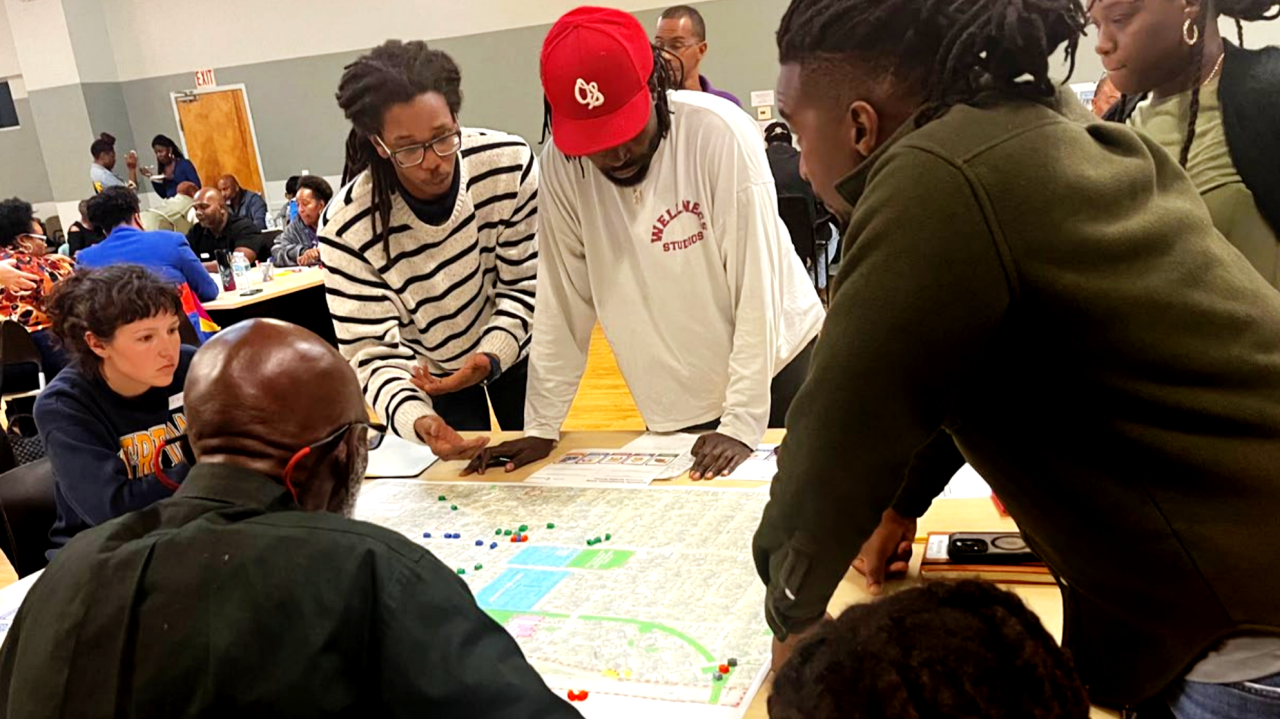Durkeeville & the Power of Withinthrification
Public Community Workshop held on December 8, 2024
What if planning began with the wisdom of the people who already call a place home?
In Jacksonville’s Durkeeville community, neighbors are advancing a vision that reframes the narrative of urban revitalization. For too long, “revitalization” in Black neighborhoods has been a euphemism for gentrification, new wealth flowing in, long-time residents pushed out, culture erased, and memory bulldozed.
Durkeeville is showing us another way. Residents call it withinthriftification, thriving from within. It means growth without displacement. It means reinvestment that strengthens legacy businesses, churches, and homeowners. It means honoring history and culture as infrastructure every bit as essential as roads and utilities.
Jacksonville Red Caps played in Durkeeville in the 1930's-40's. Image credit: The Durkeeville Historical Society
Durkeeville is rich with stories. It’s home to the largest surviving collection of houses built by Joseph Haygood Blodgett, Florida’s first Black millionaire and a self-taught builder whose architectural legacy still defines the neighborhood. It’s where the Jacksonville Red Caps played in the Negro Leagues at J.P. Small Stadium. And it’s where Black civic life, churches, beauty salons, music, and entrepreneurship thrived against all odds.
This past is defined by self-determination, whether it was the Colored Man’s Railroad connecting Black neighborhoods in the early 1900s, the craftsmanship of architects like Blodgett, or the entrepreneurial corridor of Myrtle Avenue that anchored the community during segregation. Its future is being shaped by residents insisting that planning repair, rather than repeat, the harms of redlining, urban renewal, and the construction of I-95.
The City of Jacksonville’s current Durkeeville Revitalization Study, led by Community Planning Collaborative, is working alongside residents. From new housing designed in the neighborhood’s vernacular style, to economic development clustered around the historic J.P. Small Field and future baseball museum, to memorializing the Mount Herman Cemetery that was once erased by public works, this plan is about building from within.
The lesson here stretches far beyond Jacksonville. Cities across America stand at similar crossroads: continue down the well-worn path of market-driven redevelopment that erases communities, or embrace community-led strategies that keep people rooted in place. Too often, cultural memory is treated as something soft or symbolic, a mural on the wall after the hard deals are already made. But in places like Durkeeville, cultural memory is the economic engine.
When cities treat memory as infrastructure, they unlock an economy rooted in authenticity and belonging, one that keeps wealth circulating within communities. The question is whether we will keep overlooking this power, or finally recognize that culture itself is capital.
Have you seen examples of withinthrification in your work or city? How are communities where you live leading their own revitalization efforts?



